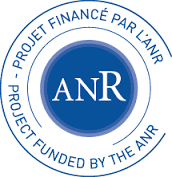2018-llf-postdoc-1
Differences
This shows you the differences between two versions of the page.
| Both sides previous revision Previous revision | |||
|
2018-llf-postdoc-1 [2018/04/10 17:21] marie.candito |
2018-llf-postdoc-1 [2018/09/06 08:30] (current) marie.candito |
||
|---|---|---|---|
| Line 35: | Line 35: | ||
| We propose to investigate the reflexive forms typology on an empirical basis, both: | We propose to investigate the reflexive forms typology on an empirical basis, both: | ||
| - | (i) with an NLP objective of automatically detecting seV forms that cannot be interpreted regularly | + | * (i) with an NLP objective of automatically detecting seV forms that cannot be interpreted regularly |
| - | (ii) and from a linguistic perspective, | + | |
| - | - how does a typology infered using observed valency of seV / V forms on large corpora compares to hand-craft typologies? | + | |
| - | - is it possible to detect syntactic and semantic characteristics correlated with the existence of a certain type of seV form? | + | |
| Line 44: | Line 44: | ||
| For evaluation and boot-strapping for automatic classification, | For evaluation and boot-strapping for automatic classification, | ||
| - | - the French part of the annotated corpora (https:// | + | * the French part of the annotated corpora (https:// |
| - | - a corpus of seV forms manually tagged with fine-grained classes (ongoing annotation by L. Barque, M. Candito and R. Huyghe) | + | |
| Depending on the native language of the hired postdoctoral fellow, reflexives in other languages can also be studied. | Depending on the native language of the hired postdoctoral fellow, reflexives in other languages can also be studied. | ||
2018-llf-postdoc-1.txt · Last modified: 2018/09/06 08:30 by marie.candito

